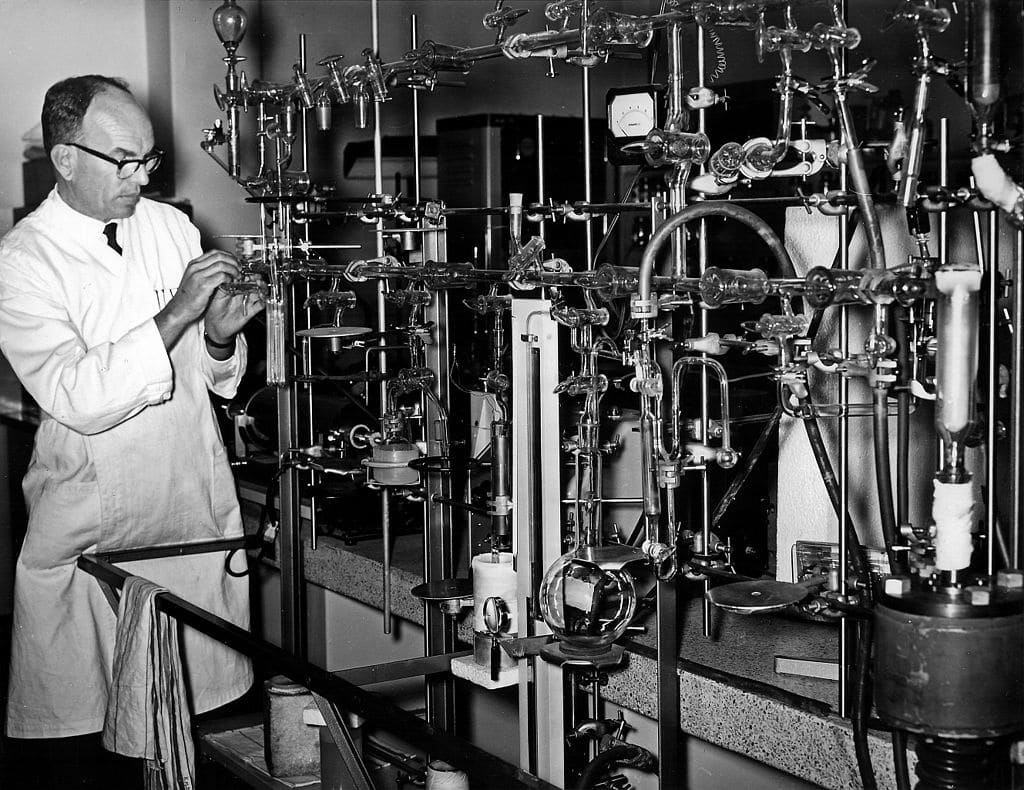Carbon-14 is used for radio carbon dating. Carbon 14 is a radioactive isotope of carbon with an atomic nucleus containing 6 protons and 8 neutrons.
It’s presence in organic materials is the basis of the radio carbon dating method pioneered by Will Libbey and his colleagues to estimate the age of something after it died.
It has been used in archeological, geology, and hydrogeological samples.
How It Works
A normal carbon atom has 6 protons and 6 neutrons. About 98.9% of carbon atoms are this way. However, a very small number of only about 1 in a trillion get an extra 2 neutrons for a total of 8.
The ones with an extra neutron are called isotopes. Isotopes are not stable and want to be like normal carbon with an equal number or protons and neutrons. As a result, they eventually turn back into normal carbon. All living things absorb carbon when they are alive. When you breathe, you take in carbon dioxide mixed with other gasses like oxygen with each breath. In addition, there is a fixed ratio of carbon-14 compared to regular carbon. This hardly changes, even over millions of years.
When something dies, it stops absorbing new carbon. However, the carbon-14 in it continues to change into regular carbon. It does this at a very exact rate. By looking at the percent of carbon-14 to normal carbon atoms in a sample we can estimate the number of carbon atoms that have decayed over time. Since we know how fast carbon-14 decays, we can get a good estimate of the age of anything that is organic.
The method is good, but not perfect. It assumes the percentage of carbon and carbon-14 in the environment is constant, but this is not always true. You may have some periods of time where there is more or less which can throw off the results. For example, with global warming, we have more now. However, scientists can correct for a lot of the fluctuations.
Please let me know what you think about this post.
Featured Image: CSIRO, CC BY 3.0 https://creativecommons.org/licenses/by/3.0, via Wikimedia Commons







